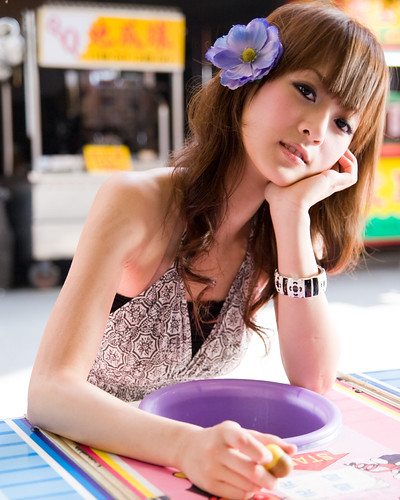Amber checks out some amber at a jade market.
If you can read English, I assume you can understand this sign. If you are able to decipher kanji 漢字, then 横浜洋菓子 is easy to comprehend - Yokohama yōgashi roughly translates as "Yokohama Western Confectioneries" or "Yokohama Pastry". But if you're limited to Mandarin 國語, this sign may pose some difficulty. The word kashi 菓子 in Japanese means "cake", "pastry" or "confectionery". However, if you run the characters through an online Chinese-English dictionary, a very different meaning comes out. Do an image search of kuǒtzu 菓子 on Google Taiwan, and this is what you get:

...which is certainly very sweet, but not exactly a cake. The actual meaning of 菓子 (or its variant 果子) is fruit, which isn't really related to pastries, either. So to a Mandarin speaker, 横浜洋菓子 could possibly be construed as a case of false advertising.
So how would your average Taiwanese know what is really for sale at this particular establishment? The short answer is, they probably wouldn't (and it's been my experience that most people in this country pay very little attention to the English used on signs, despite its prevalence). So why would this cake shop seemingly go out of its way to confuse, and possibly, drive away potential customers? According to my wife, it isn't. For the name "Yokohama" is widely-recognized in T'áiwān 台灣 (at least as Héngpīn, going by the Chinese reading for 横浜, or its traditional variant 横滨), and Pamela feels that is enough to suggest to most locals that something Japanese is on offer inside, and therefore worth going in to have a look. So if you ever decide to open a business on this island, and wish to save some money on advertising, just give your establishment a well-known Japanese name, and wait for the punters to come in, the cash registers to start ringing and let them eat cake!


No comments:
Post a Comment